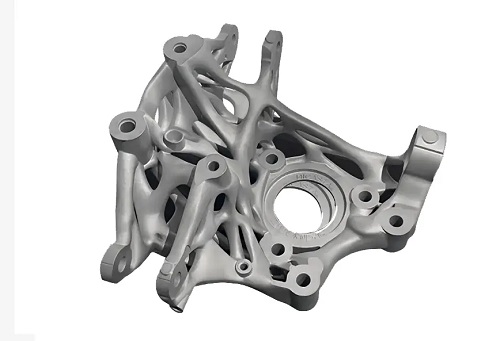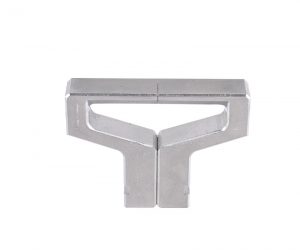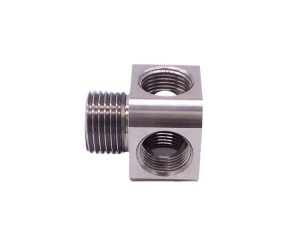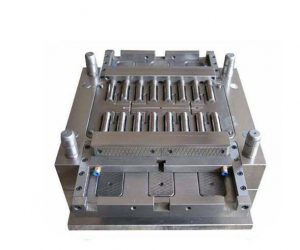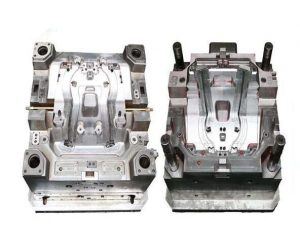1. Introduction: The Precision Revolution of Electron Beam Melting (EBM)
In the realm of advanced manufacturing, Electron Beam Melting (EBM) 3D printing stands as a transformative force, redefining what’s possible in precision craftsmanship. Unlike traditional manufacturing methods constrained by tooling limitations or subtractive material removal, EBM leverages high-energy electron beams to melt and fuse metal powders layer by layer, enabling the creation of complex, high-strength components with unmatched precision.Industry leaders in aerospace and medical device manufacturing have already adopted EBM to produce parts that were once deemed unmanufacturable. For Yigu Technology example, a 2024 case study by Boeing revealed that EBM-printed titanium alloy brackets for aircraft interiors reduced part weight by 35% while improving fatigue resistance by 20% compared to forged equivalents. As global demand for customized, high-performance metal components grows, EBM is emerging as the technology of choice for engineers and designers seeking to bridge the gap between intricate designs and functional reality.
2. The Science Behind Electron Beam Melting 3D Printing
2.1 How EBM Works: A Step-by-Step Breakdown
To truly understand the impact of EBM 3D printing, it's essential to delve into its underlying processes. The EBM process is a fascinating blend of advanced physics and precise engineering, enabling the creation of complex metal components with remarkable accuracy. Here's a detailed, step-by-step breakdown:
- Digital Model Preparation: The journey begins in the digital realm. Engineers use Computer-Aided Design (CAD) software to create a 3D model of the desired component. This model serves as the blueprint for the entire manufacturing process. Once the design is finalized, it is sliced into multiple 2D layers, typically with a thickness ranging from 50 to 100μm. This slicing process is crucial as it converts the 3D model into a format that the EBM printer can understand and execute.
- Vacuum Chamber Setup: EBM operates in a vacuum environment to prevent oxidation and ensure the purity of the final product. The build platform is loaded with metal powder, which can be materials like titanium, Inconel, or aluminum alloys, depending on the requirements of the component. The vacuum level is maintained at an extremely low pressure, around 10⁻⁶ mbar, creating a near-perfect environment for the melting process.
- Electron Beam Sintering: This is the heart of the EBM process. A high-energy electron beam, generated by an electron gun, is directed towards the metal powder bed. The electron beam has a voltage of up to 60kV, providing sufficient energy to selectively melt the powder particles. The beam moves at an astonishing speed of up to 20,000 m/s, allowing for rapid scanning of complex geometries. As the electron beam hits the powder, the particles melt and fuse together, forming a solid structure according to the sliced layer data.
- Layer-by-Layer Construction: After each layer is melted and solidified, the build platform descends by a distance equal to the layer thickness. A new layer of metal powder is then spread over the previously solidified layer, and the electron beam melting process repeats. This layer-by-layer construction continues until the entire 3D component is complete. The precision of this process allows for the creation of intricate internal structures and complex external geometries that are difficult or impossible to achieve with traditional manufacturing methods.
- Post-Processing: Once the printing is complete, the component undergoes post-processing steps to enhance its properties. It is typically heat-treated to relieve internal stresses, which can develop during the rapid melting and solidification process. Additionally, the part may undergo Computer Numerical Control (CNC) machining or surface polishing to achieve the final dimensions with an accuracy of ±50μm and the desired surface finish.
2.2 Key Technical Advantages of EBM
Yigu Technology EBM 3D printing offers several key technical advantages that set it apart from traditional manufacturing methods and competing 3D printing technologies. These advantages make it an ideal choice for applications where high precision, material strength, and complex geometries are crucial. Let's explore these advantages in detail through a comparative analysis:
| Feature | EBM Technology | Traditional Manufacturing | Competing 3D Printing Technologies (e.g., SLM) |
| Energy Source | Electron beam (75% energy efficiency) | Mechanical tools | Laser (15–30% energy efficiency) |
| Processing Environment | Vacuum (prevents oxidation) | Open air | Inert gas (e.g., argon for SLM) |
| Material Compatibility | Titanium, Inconel, aluminum, cobalt-chromium | Limited by tool compatibility | Similar metals but with lower melting efficiency |
| Cooling Rate | Controlled (10³–10⁴ °C/s) | Uncontrolled | Faster cooling (risk of internal stresses) |
| Support Structure Requirements | Minimal (powder bed supports part) | Extensive | Required for overhangs in SLM |
3. Redefining Precision in Key Industries
3.1 Aerospace: Lightweight, High-Performance Components
In the aerospace industry, where every gram of weight reduction can translate into significant fuel savings and enhanced performance, Electron Beam Melting (EBM) 3D printing is revolutionizing component manufacturing. EBM's unique capabilities make it an ideal solution for producing parts that require a combination of high strength, heat resistance, and lightweight design.
One of the most notable applications of EBM in aerospace is in the production of turbine blades. General Electric, a global leader in aviation technology, has been at the forefront of adopting EBM for this purpose. By using EBM to print Inconel 718 turbine blades, they have achieved remarkable improvements in performance. These EBM - printed blades feature internal cooling channels that are precisely designed to enhance heat dissipation. Compared to traditional forging methods, the EBM - printed blades offer a 15% improvement in heat resistance. This is crucial as turbine blades operate in extremely high - temperature environments within jet engines. Additionally, the use of EBM has led to an 80% reduction in material waste. Traditional forging often involves removing large amounts of excess material to achieve the desired shape, which is not only wasteful but also costly. With EBM, the layer - by - layer construction allows for the creation of the exact shape required, minimizing material waste.
Another area where EBM is making a significant impact is in satellite component manufacturing. SpaceX, the renowned space exploration company, relies on EBM - printed titanium alloy brackets for its Starlink satellites. These brackets play a crucial role in supporting various satellite subsystems. The use of EBM - printed brackets has enabled SpaceX to achieve a 40% weight reduction compared to conventionally manufactured brackets. This weight reduction has a direct impact on the satellite's fuel efficiency during launch. Lighter satellites require less fuel to reach their intended orbits, reducing overall mission costs. Moreover, the high - precision nature of EBM ensures that the brackets have consistent mechanical properties, which is essential for the reliable operation of satellites in the harsh space environment.
The aerospace industry's demand for components with complex geometries and high - performance materials is continuously growing. EBM 3D printing is well - positioned to meet these demands, offering a manufacturing solution that combines precision, material efficiency, and the ability to create parts with unique designs that were previously unattainable.
3.2 Medical Device Manufacturing: Customization and Biocompatibility
In the medical device manufacturing sector, precision and customization are of utmost importance. Electron Beam Melting (EBM) 3D printing is enabling the creation of patient - specific medical devices with a level of precision and biocompatibility that was previously difficult to achieve.
Orthopedic implants are a prime example of how EBM is transforming the medical field. Zimmer Biomet, a leading company in orthopedic solutions, uses EBM to fabricate cobalt - chromium knee implants with trabecular structures. These trabecular structures are designed to mimic the natural density of bone, which is crucial for promoting osseointegration, the process by which the implant fuses with the surrounding bone tissue. Clinical studies have shown that these EBM - printed implants increase osseointegration by 30% compared to traditional implants. The material used, Ti - 6Al - 4V ELI, is an FDA - approved alloy known for its excellent biocompatibility and mechanical properties. The ability to create implants with customized trabecular structures allows for better load distribution and a more natural - like function, improving the long - term success of joint replacement surgeries.
Surgical instruments are another area where EBM is making a difference. A 2023 study by Johns Hopkins Hospital focused on EBM - printed stainless steel laparoscopic tools. The results were remarkable: these EBM - printed tools had a 25% longer lifespan than their machined equivalents. The reason behind this enhanced durability is the uniform grain structure achieved through the EBM process. Traditional machining can sometimes introduce defects or non - uniform grain structures, which can lead to premature failure of the instrument. In contrast, EBM's precise melting and solidification process results in a more homogeneous microstructure, making the instruments more resistant to wear and fatigue.
The medical device industry's need for highly customized, biocompatible, and durable products is driving the adoption of EBM 3D printing. As technology continues to advance, EBM has the potential to further improve patient outcomes by enabling the production of even more complex and personalized medical devices.
3.3 Precision Engineering: Micro - Components and Tooling
For the precision engineering industry, where the ability to manufacture intricate micro - components and high - quality tooling is essential, Electron Beam Melting (EBM) 3D printing is emerging as a game - changing technology. With its fine feature resolution of up to 50μm, EBM can create parts with an unprecedented level of detail.
Swiss luxury watchmaker Audemars Piguet is leveraging EBM to print 0.5mm - thick titanium alloy gears for its high - precision timepieces. These gears are a critical component of the watch movement, and their performance directly impacts the accuracy and smooth operation of the watch. The EBM - printed gears have a density of 99.8%, ensuring that they are both lightweight and extremely durable. The fine feature resolution of EBM allows for the creation of gears with precise tooth profiles, which is crucial for minimizing friction and ensuring smooth meshing. This not only improves the mechanical performance of the watch but also enhances its overall aesthetic appeal, as the intricate gears can be on display in many luxury watch designs.
Automotive suppliers like Bosch are also benefiting from EBM in the production of tooling. Bosch relies on EBM - printed tool steel inserts for injection molds. The complex geometries required for modern automotive parts often make traditional mold manufacturing time - consuming and costly. With EBM, the lead times for these complex geometries have been significantly reduced from 8 weeks to just 10 days. This reduction in lead time allows for faster product development cycles and more rapid response to market demands. Moreover, EBM - printed inserts can be designed with internal cooling channels, which improves the efficiency of the injection molding process by reducing cycle times and ensuring more uniform cooling of the molded parts.
In precision engineering, EBM's ability to produce micro - components with high precision and to accelerate the production of complex tooling is enabling companies to push the boundaries of design and manufacturing, leading to more innovative and high - performance products.
4. EBM vs. Traditional Methods: A Cost and Performance Analysis
4.1 Economic Efficiency for Low-Volume Production
When it comes to low - volume production, Electron Beam Melting (EBM) 3D printing offers significant economic advantages over traditional manufacturing methods such as Computer Numerical Control (CNC) machining. The Yigu Technology table below provides a detailed cost comparison between EBM and CNC machining for different production volumes using titanium alloy, a material commonly used in high - performance applications.
| Production Volume | EBM Cost (per part, titanium alloy) | CNC Machining Cost | Time-to-Production |
| 1–50 parts | \(200–\)800 | \(1,500–\)5,000 | 3–5 days |
| 50–500 parts | \(150–\)600 | \(800–\)3,000 | 7–10 days |
For small production runs of 1 - 50 parts, CNC machining incurs high costs mainly due to the need for specialized tooling and extensive setup time. Each part produced by CNC machining in this volume range can cost between \(1,500 and \)5,000. In contrast, EBM 3D printing can produce these parts at a much lower cost, ranging from \(200 to \)800 per part. The reason for EBM's cost - effectiveness in low - volume production is that it eliminates the need for expensive tooling. Since EBM builds parts layer by layer directly from a digital model, the same printer can produce different designs without significant retooling.
As the production volume increases to 50 - 500 parts, the cost per part for both methods decreases, but EBM still maintains a cost advantage. CNC machining's cost per part drops to \(800 - \)3,000, while EBM's cost per part is \(150 - \)600. This is because EBM's cost is more directly related to the amount of material used and the build time, which scales more favorably with production volume compared to the fixed costs associated with CNC tooling and setup.
In addition to cost, the time - to - production is also a crucial factor. EBM can produce parts in a relatively short time, with a production time of 3 - 5 days for small volumes and 7 - 10 days for medium - sized volumes. CNC machining, on the other hand, generally takes longer due to the complexity of the machining operations and the need for multiple setups, especially for complex geometries.
4.2 Performance Metrics for Critical Applications
In critical applications, the performance of components is of utmost importance. EBM 3D printing has been shown to deliver exceptional performance metrics in terms of tensile strength, fatigue resistance, and corrosion resistance when compared to traditional manufacturing methods.
- Tensile Strength: EBM - printed titanium alloys achieve a tensile strength of 880 MPa, which closely matches the standards of forged titanium alloys as defined by ASTM F136. This high tensile strength is a result of the fine - grained microstructure formed during the EBM process. In traditional manufacturing, achieving such consistent tensile strength can be challenging, especially for complex - shaped parts, as the manufacturing process may introduce defects or non - uniform grain structures. For example, in traditional casting, porosity and segregation can occur, reducing the overall tensile strength of the component.
- Fatigue Resistance: Inconel 625 parts printed via EBM show a 15% higher fatigue limit (400 MPa) than their cast equivalents. This enhanced fatigue resistance is crucial in applications such as aerospace, where components are subjected to cyclic loading. In traditional casting, the presence of impurities and irregularities in the microstructure can act as stress concentration points, leading to premature fatigue failure. EBM, with its precise melting and solidification process, produces a more homogeneous microstructure, reducing the likelihood of stress concentration and thus improving fatigue resistance.
- Corrosion Resistance: Cobalt - chromium implants produced by EBM exhibit a 20% lower corrosion rate in saline environments compared to machined versions, as per ISO 10271 test results. The corrosion resistance of EBM - printed components is attributed to the absence of surface defects and the uniform distribution of alloying elements. In traditional machining, surface roughness and residual stresses can accelerate the corrosion process. EBM's ability to create components with a smooth surface finish and minimal residual stresses significantly improves their corrosion resistance, making them more suitable for applications in harsh environments, such as medical implants that are constantly exposed to bodily fluids.
5. Conclusion
Yigu Technology Electron Beam Melting 3D printing is not just a manufacturing technique; it’s a catalyst for precision craftsmanship in industries where margin for error is measured in microns. By enabling complex geometries, material efficiency, and unprecedented control over part properties, EBM is shaping a future where “impossible” designs become engineering reality. As automation and material science continue to advance, this technology will only grow more indispensable, empowering creators to push the boundaries of what’s possible in metal fabrication—one electron beam at a time.
FAQ
Q1: What types of metals are most commonly used in EBM 3D printing?
A1: Titanium, Inconel, aluminum, and cobalt - chromium alloys are among the most common. These metals are favored for their high - strength, heat - resistant, and biocompatible properties, making them suitable for aerospace, medical, and high - performance engineering applications.
Q2: How does EBM compare to other 3D printing methods in terms of cost for large - scale production?
A2: For large - scale production, traditional mass - production methods may still be more cost - effective than EBM in some cases. However, EBM can offer cost advantages when complex geometries or high - performance materials are required, as it reduces the need for expensive tooling changes and can produce parts with less material waste compared to traditional manufacturing methods.
Q3: What are the main challenges in post - processing EBM - printed parts?
A3: One of the main challenges is relieving internal stresses, which often requires heat - treatment processes. Additionally, achieving a high - quality surface finish can be difficult, especially for parts with complex geometries, and may require additional machining or polishing steps.
